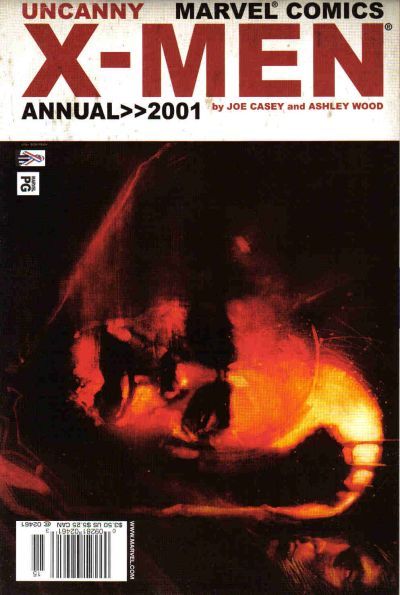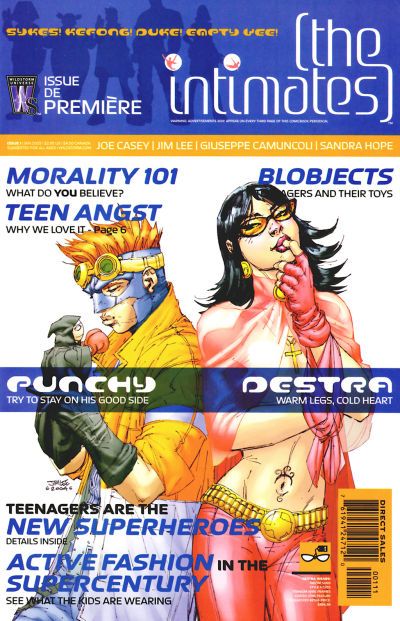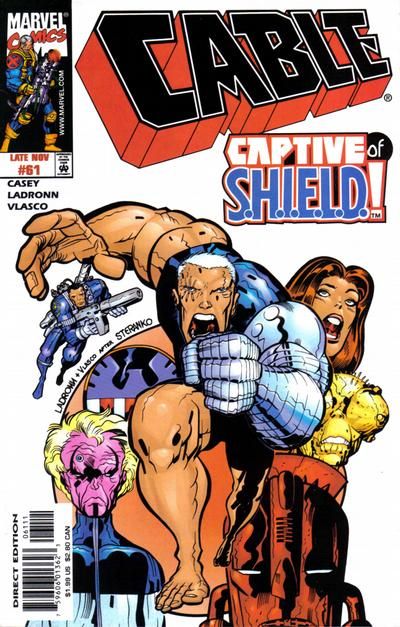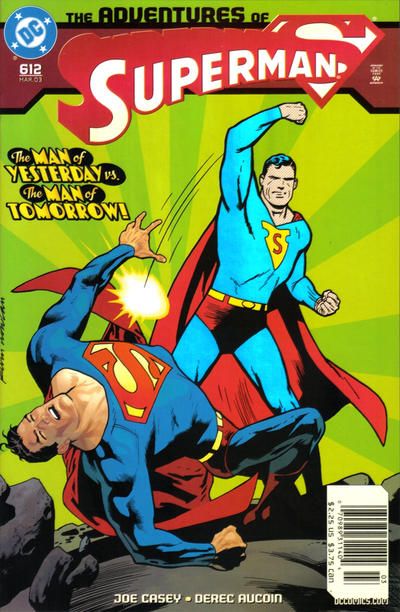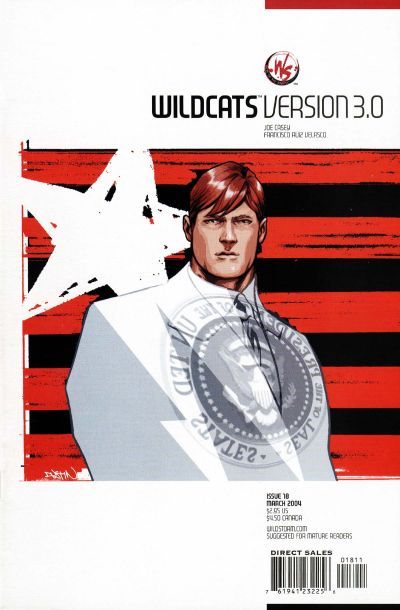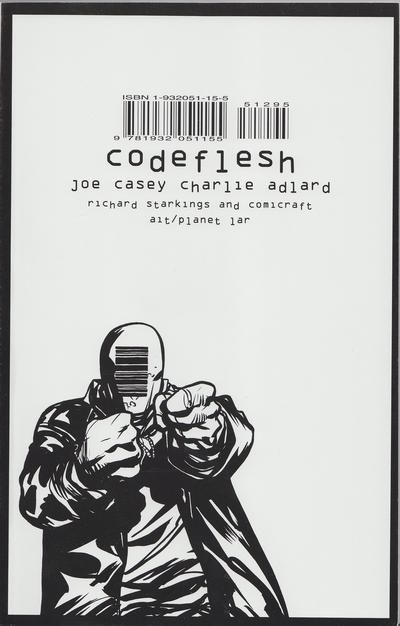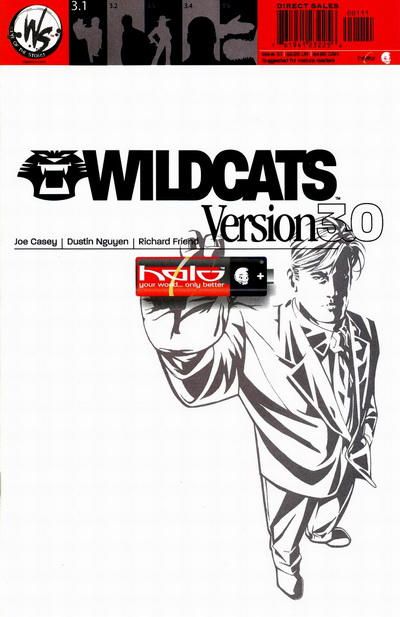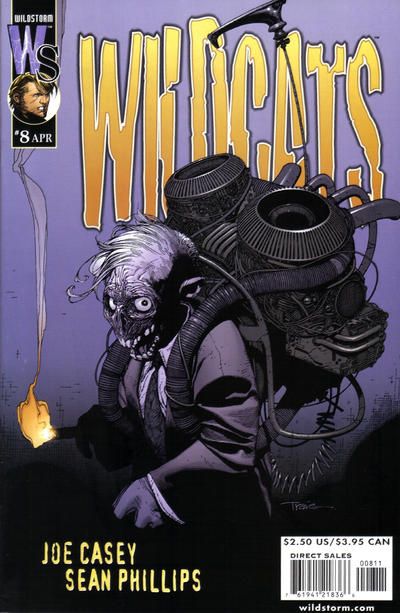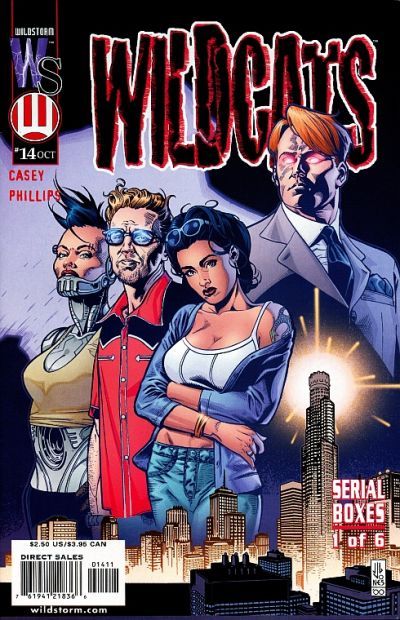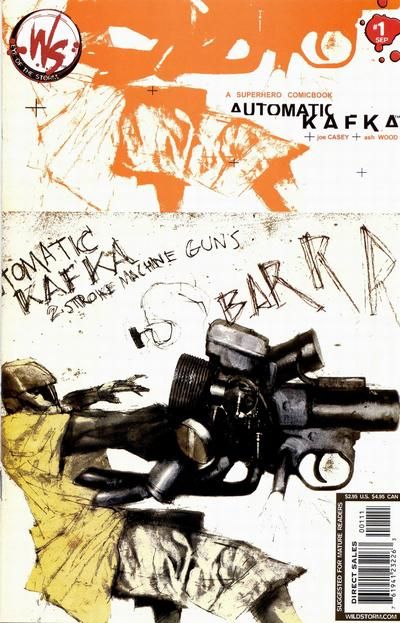Every day in November we will reveal the greatest stories ever told starring a particular character or written/drawn by a particular creator (and throughout the month, you'll get daily chances to vote for NEXT week's lists). These lists are voted on by YOU, the reader!
Here is the list of characters/creators featured so far (along with the rules on how to vote).
Today's list is the Greatest Joe Casey Stories Ever Told!
Enjoy!
Sorry for the delay! In the rules, I noted that stories could be twelve issues long, so if I had a scenario where, say, the majority of the votes were for Intimates #1-12 while a handful of the votes were for a single issue of the Intimates, I just lumped the single issue in as a vote for Intimates #1-12.
10. Uncanny X-Men Annual 2001, Uncanny X-Men #407-409
It really is a shame that Casey's X-Men really "clicked" at this late point in his run. His last few issues, as well as the Annual that led to them, had Casey working with two stellar artists, Ashley Wood and Sean Phillips, as Casey takes a crack at turning Warren Worthington into the sort of crusading businessman that Casey later had so much success with with Jack Marlowe. The new take on Vanisher was quite compelling.
9. Intimates #1-12
This offbeat series following a school for superheroes opened up with very strong artwork by Giuseppe Camuncoli. Casey used a number of innovative narrative approaches in this clever and unusual series, which I believe was Casey's farwell to the Wildstorm universe that he did so much good with.
8. Cable #59-62 "The Nemesis Contract"
In this big, Kirby-esque adventure, Cable fights against SHIELD headhunter, Jack Truman. Paired with Ladronn, Casey tells a fun and engaging action romp that allows Casey to play with Cable's place within the Marvel Universe while also setting up stories that would later come into play during Casey's run on Deathlok (where Truman returns).
7. Adventures of Superman #612-616 "The Hollow Men"
In this inspired series of stories, Clark Kent comes across an old journalism mentor of his, whose fictional works are coming to life. Casey uses this plot device to compare and contrast modern Superman against how Superman originally appeared, showing just how different Superman is today, and more importantly, Casey shows us a Superman that does not use violence to solve problems. Engaging stuff.
6. Wildcats 3.0 #13-24 "Year Two"
Casey's finale of his Wildcats run is more or less split into two distinct elements (if it weren't for the fact that this was, indeed, released as a "Year Two" trade, I would think of it as two stories), with the first being the clever and cerebral examination of how Jack Marlowe's corporate endeavors are viewed by the United States government and the second being a re-visitation of older WildC.A.T.s stories with the return of Zealot and her warrior group, the Coda, in Coda War One. The series ends on a series of over-the-top dramatic fight sequences. Still an enjoyable ride.
5. Codeflesh
Originally appearing in a couple of different flip books, Codeflesh was eventually collected into a single collection. It is about a bail bondsman who continually offers bail to supervillains because he knows that they will skip bail and he will be able to take them down. Once a judge tells him he cannot do this anymore, he creates a costumed identity to continue doing it anyways. Casey does a sort of old school superhero riff here, in the sense that our "hero" is torn between his private life and his "superhero" life, only what he is doing is really not noble - it is driven more by his enjoyment of hunting down criminals. Charles Adlard did excellent artwork, especially on the final part of the original story where he and Casey do a very experimental story.
4. Wildcats 3.0 #1-12 "Year One"
This extremely ambitious series followed Jack Marlowe, the hero formerly known as Spartan, as he attempts to essentially save the world through his corporation (and his futuristic battery, of course). Meanwhile, Cole Cash trains one of Marlowe's accountants to become the new Grifter. Dustin Nguyen does the art on this
3. Wildcats Volume 2 #8-13 "Vicious Circles"
This was Joe Casey and Sean Phillips' first storyline on Wildcats, and this gave the hint of the great promise that they would achieve with taking the initial concept of Wildcats and pushing it into whole other areas. Casey plays with the idea that the Wildcats really do not have a reason for being on Earth anymore. By the end of the story, though, Spartan has taken on a new name and a new purpose. It is strong, character-driven work.
2. Wildcats Volume 2 #14-19 "Serial Boxes"
In their second storyline on Wildcats, Casey and Phillips use a super-powered serial killer to mold the cast of the book to the characters that they most want to write. A result of this is some shocking violence towards some of the regular members of the title. However, Casey introduces us to a bunch of new cast members as he continues his drive towards making this a moody, character-based comic book (having the great Sean Phillips on artwork certainly helps in that regard).
1. Automatic Kafka #1-9
This highly metafictional comic book shows us a washed-up superhero from the 1980s who is being pursued by the government to work for them. To avoid them, he becomes a celebrity game show host. The artwork by Ashley Wood is sublime and Casey has a number of stand-out issues, most famous being #4, an examination of what the Peanuts gang might be up to had they not been lucky enough to be stuck as kids forever and #9, where Casey and Wood break the news to their creation that his book has been canceled.
Agree? Disagree? Let me know! And go vote for the other characters and creators on the list!


